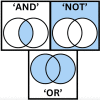Ten Steps to Conduct a Systematic Review
- PMID: 38299136
- PMCID: PMC10828625
- DOI: 10.7759/cureus.51422
Ten Steps to Conduct a Systematic Review
Abstract
This article introduces a concise 10-step guide tailored for researchers engaged in systematic reviews within the field of medicine and health, aligning with the imperative for evidence-based healthcare. The guide underscores the importance of integrating research evidence, clinical proficiency, and patient preferences. It emphasizes the need for precision in formulating research questions, utilizing tools such as PICO(S)(Population Intervention Comparator Outcome), PEO (Population Exposure Outcome), SPICE (setting, perspective, intervention/exposure/interest, comparison, and evaluation), and SPIDER (expectation, client group, location, impact, professionals, service and evaluation), and advocates for the validation of research ideas through preliminary investigations. The guide prioritizes transparency by recommending the documentation and registration of protocols on various platforms. It highlights the significance of a well-organized literature search, encouraging the involvement of experts to ensure a high-quality search strategy. The critical stages of screening titles and abstracts are navigated using different tools, each characterized by its specific advantages. This diverse approach aims to enhance the effectiveness of the systematic review process. In conclusion, this 10-step guide provides a practical framework for the rigorous conduct of systematic reviews in the domain of medicine and health. It addresses the unique challenges inherent in this field, emphasizing the values of transparency, precision, and ongoing efforts to improve primary research practices. The guide aims to contribute to the establishment of a robust evidence base, facilitating informed decision-making in healthcare.
Keywords: guide; methodology; platforms; systematic review; tools.
Copyright © 2023, Calderon Martinez et al.
Conflict of interest statement
The authors have declared that no competing interests exist.
Figures

References
-
- Sampieri-Cabrera R, Calderon-Martinez E. Mexico: Zenodo; 2022. Correlatos biopsicosociales en la educación médica del siglo XXI: de la teoría a la práctica.
-
- Tenny S, Varacallo M. United States: StatPearls Publishing; 2022. Evidence based medicine. - PubMed
-
- About the Cochrane Database of Systematic Reviews. [ Dec; 2023 ];https://www.cochranelibrary.com/cdsr/about-cdsr 8:2023.
-
- PROSPERO. [ Dec; 2023 ]; https://www.crd.york.ac.uk/prospero/ 8:2023.
LinkOut - more resources
Full Text Sources
